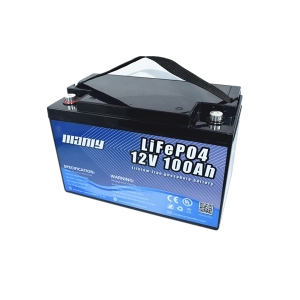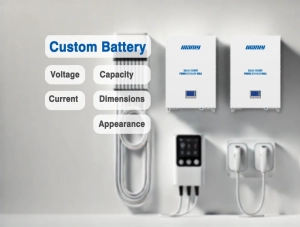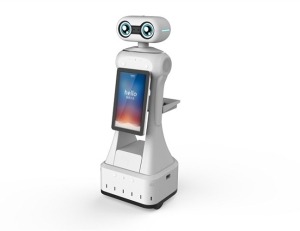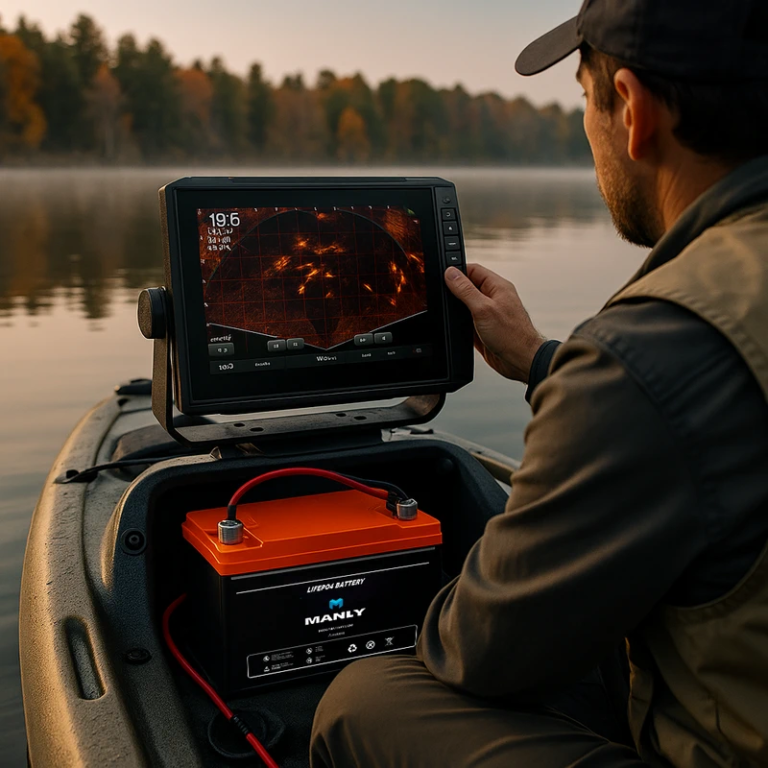Guida essenziale del 2024 alla tecnologia dei robot mobili autonomi
Sommario
- Guida essenziale del 2024 alla tecnologia dei robot mobili autonomi
- Spiegazione della definizione di robot autonomo
- I meccanismi dietro i robot mobili autonomi
- Il futuro dell'applicazione della robotica nella vita di tutti i giorni
- Vantaggi dei robot mobili autonomi
- Esplorare le differenze: AGV e AMR
- Quale batteria è adatta per i robot mobili autonomi?
- Batteria MANLY: alimentare il futuro degli AMR con la tecnologia LiFePO4
- Manutenzione ottimale della batteria per robot mobili autonomi
- Ulteriori informazioni sulla batteria
Spiegazione della definizione di robot autonomo
1. Introduzione alla robotica autonoma
In today's era of industrial automation and technological advancements, the emergence of Autonomous Mobile Robots (AMRs) marks a significant leap forward. These Self-Driving Robots, exemplifying the autonomous robot definition, blend the functionality of a mechanical arm with a mobile base, equipped with advanced autonomous navigation capabilities. This integration is transforming traditional task execution, previously reliant on manual labor or human-operated machines. By automating such tasks, AMRs drastically cut down on labor dependence, reduce human errors, and greatly enhance production efficiency.2. Definizione e applicazione di robot mobili autonomi
Fundamentally, an autonomous mobile robot is a robot that understands its environment and navigates independently within it. This definition sets AMRs apart from their forerunners like Automated Guided Vehicles (AGVs), which are limited to tracks or pre-set paths and often need human oversight. In contrast, AMRs utilize a complex array of sensors, artificial intelligence, and machine learning for path planning and environmental navigation, free from the limitations of fixed power sources.AMRs are increasingly being adopted in industries such as warehousing, logistics, agriculture, and healthcare, to improve operational efficiency, speed, accuracy, and safety. The defining feature of autonomous robots in these applications is their intelligent navigation. For example, if an AMR encounters unexpected obstacles like debris or crowds, it employs advanced technologies like collision avoidance to slow down, stop, or reroute, ensuring uninterrupted task completion. This adaptability makes AMRs indispensable in dynamic and unpredictable settings.Looking forward to 2024, the integration of autonomous mobile robots in various industries represents not just a trend, but a paradigm shift in business operations optimization. For companies aiming to remain competitive and efficient, understanding and incorporating AMRs into their processes is increasingly becoming a necessity.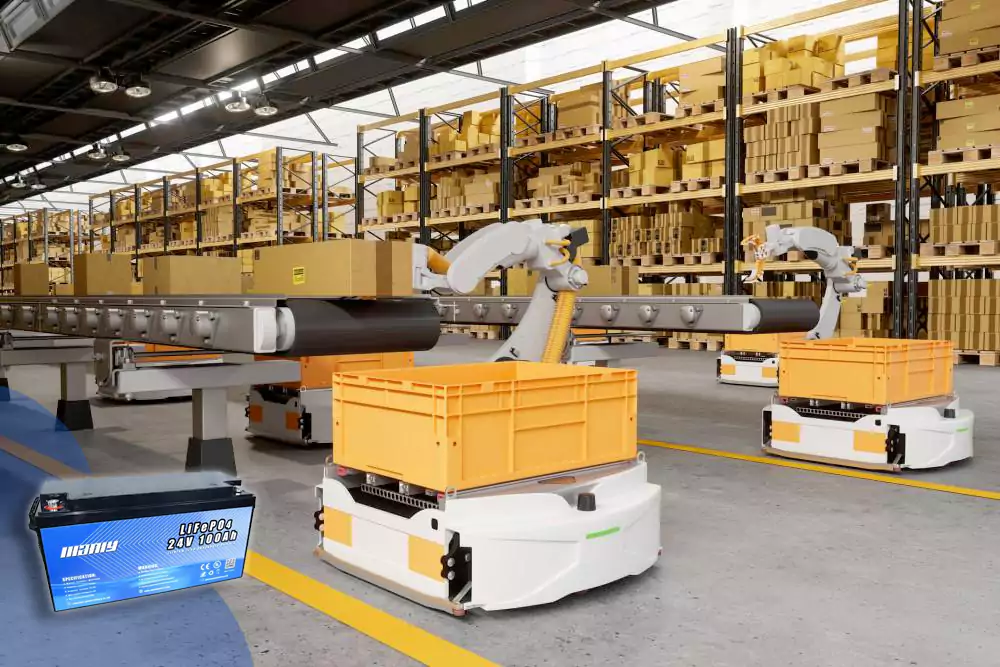
I meccanismi dietro i robot mobili autonomi
1. Tecnologie innovative che alimentano gli AMR
Autonomous Mobile Robots (AMRs) represent a significant leap from their Automated Guided Vehicle (AGV) predecessors. While AGVs are reliant on tracks or predefined routes, often requiring human supervision, AMRs operate with a higher degree of intelligence and independence. Central to the autonomous mobile robot definition is its ability to understand and navigate its environment autonomously. This is achieved through a sophisticated combination of sensors, artificial intelligence (AI), and machine learning technologies, all working in tandem to enable path planning and navigation without the need for wired power sources.2. Come funzionano i robot mobili autonomi?
The functionality of AMRs is a testament to the advancements in cloud computing and powerful edge processing technologies. These robots are designed to gather real-time information about their surroundings through local sensors. They control their movement using precise motor and drive setups. The technological cornerstones that are pivotal for the next revolution in AMRs include:- Visione artificiale: Impiega una o più telecamere per osservare l'ambiente in modo simile alla vista umana. I miglioramenti nell’intelligenza artificiale, nell’apprendimento automatico e nell’elaborazione edge elevano questa capacità.
- LIDAR (rilevamento e portata della luce): This technology generates a point cloud to create a three-dimensional map of the surrounding area, enhancing the robot's spatial awareness.
- Informatica Edge AI: I potenti moduli di elaborazione integrati negli AMR facilitano il processo decisionale in tempo reale, aggirando la latenza inerente all'accesso a risorse cloud distanti. I computer a scheda singola (SBC) come la serie Jetson sono popolari per la sperimentazione dell'intelligenza artificiale all'avanguardia.
- Rete senza fili: Ciò consente l'accesso alle risorse informatiche cloud e/o locali (a livello di struttura) e coordina il funzionamento di più robot come collettivo.
- Conducenti di motori: These are crucial for the direct control of the robot's motors, allowing for precise and controlled movement.
Il futuro dell'applicazione della robotica nella vita di tutti i giorni
1. Rivoluzionare le operazioni con la tecnologia AMR
Autonomous Mobile Robots (AMRs) are transforming operations in diverse sectors, offering unparalleled flexibility and adaptability. Particularly useful in environments with large areas, multiple sites, and varied production lines, AMRs are being adopted by leading companies worldwide. Giants like Taiwan's Foxconn and TSMC are pioneering AMR integration, a trend now crucial for businesses globally. Let's delve into how AMRs are changing the game in different industries:Produzione: L’industria manifatturiera, duramente colpita dalla carenza di manodopera, soprattutto durante la pandemia di COVID-19, sta rapidamente adottando le resistenze antimicrobiche. In precedenza, attività quali la movimentazione dei materiali e la gestione del magazzino dipendevano fortemente dal lavoro umano. Ora, con gli AMR, dotati di tecnologie avanzate come la mappatura interna basata su fotocamera e la connettività 5G, i processi di produzione stanno diventando più efficienti.Assistenza Sanitaria: Il settore sanitario, che si trova ad affrontare simili carenze di personale, sta utilizzando gli AMR per compiti di routine. Ad esempio, il lungo lavoro di trasporto delle forniture mediche viene ora automatizzato grazie agli AMR, con conseguente miglioramento dell’assistenza ai pazienti e riduzione del carico di lavoro del personale.Ospitalità e Ristorazione: Nelle aree ad alta intensità di manodopera come ristoranti e hotel, gli AMR stanno automatizzando attività come la consegna dei pasti e i servizi agli ospiti. Ciò non solo aumenta l’efficienza, ma funge anche da aspetto di marketing unico, migliorando l’esperienza del cliente.2. Espansione delle applicazioni della robotica in vari campi
Beyond these examples, robots, including AMRs, are making significant inroads in various sectors, improving outcomes and reducing employee workload. Key areas include:- agricoltura: In questo caso, gli AMR contribuiscono a una raccolta efficiente e precisa del raccolto.
- Medico: Nel settore sanitario, i robot trasportano farmaci e disinfettano le superfici, tra le altre attività.
- Logistica: Gli AMR e i veicoli a guida automatizzata (AGV) stanno rivoluzionando il trasporto e la logistica attraverso una gestione efficiente delle merci.
- Vendita al dettaglio e ospitalità: In questi settori, i robot aiutano nella gestione dell’inventario, nel servizio clienti, nella pulizia e altro ancora.
- Città intelligenti: I robot sono fondamentali per creare aree urbane più sicure e intelligenti, offrendo guida, pattuglie di sicurezza e supporto nella costruzione e nel rilevamento.
Vantaggi dei robot mobili autonomi
1. Aumentare l’efficienza del settore con gli AMR
Autonomous Mobile Robots (AMRs) are reshaping industries with their cutting-edge capabilities. These robots are not just tools; they are driving forces behind significant improvements in efficiency, productivity, and safety. Let's explore the myriad advantages of AMRs and their transformative impact.1.1 Efficienza superioreGli AMR eccellono nell'esecuzione delle attività in modo autonomo, offrendo precisione e coerenza senza precedenti. Questa autonomia consente ai lavoratori umani di spostare la propria attenzione su compiti più complessi, creando una perfetta sinergia tra esseri umani e robot. Il risultato è un flusso operativo più fluido ed efficiente.1.2 Maggiore produttivitàAMRs bring a new level of labor stability, performing consistently and minimizing production delays. They play a crucial role in optimizing supply chain processes, ensuring faster and more efficient goods movement. Their adaptability shines in dynamic environments where operational needs can shift rapidly.1.3 Enhanced SafetyArmed with advanced AI, AMRs significantly lower the risk of accidents, particularly in hazardous work environments. This deployment of autonomous robots in risky areas aligns with strict safety protocols, bolstering overall workplace safety.1.4 Cost-Effective SolutionsWhile AMRs require initial investment, the long-term savings are substantial. They help cut down on labor and operating expenses, reducing overall operational costs. Their low maintenance needs and minimized error rates further underscore their financial benefits.1.5 Streamlined OperationsAMRs enhance workflow efficiency through advanced data collection, enabling data-driven decision-making. They foster a more agile and responsive operational system, crucial for modern business demands. Their ability to reduce human error and adapt to changing business needs ensures sustainable growth.2. Trasformare i magazzini e la produzione con gli AMR
In warehouse settings, AMRs revolutionize tasks like material handling and sorting, greatly improving operational efficiency. Their autonomous navigation and shelf management capabilities are vital in automating warehouse logistics.In manufacturing, AMRs are instrumental in optimizing costs, enhancing quality, and reducing delivery times. They are deployed in production lines and assembly scenarios, driving automated logistics and collaborative robotics.The adoption of AMRs is not only transforming the warehouse and logistics sectors but also empowering the manufacturing industry towards digital transformation and flexible production. They are key players in the move towards intelligent manufacturing, a hallmark of Industry 4.0.In summary, the integration of Autonomous Mobile Robots in various business sectors is proving to be a strategic game-changer. From boosting efficiency and productivity to ensuring safety and cost reduction, AMRs standall’avanguardia nell’innovazione industriale. Con l’avanzare dell’era digitale, l’importanza della resistenza antimicrobica nel plasmare il futuro delle industrie diventa sempre più chiara. La loro capacità di adattarsi, apprendere e migliorare le operazioni li posiziona come risorse inestimabili per le aziende che cercano crescita e competitività nel mercato globale.
Esplorare le differenze: AGV e AMR
1. Decifrare le funzionalità AGV e AMR nell'automazione industriale
In the dynamic field of industrial automation, distinguishing between Automated Guided Vehicles (AGVs) and Autonomous Mobile Robots (AMRs) is essential for businesses aiming to optimize operations. Let's dissect the key differences that set these technologies apart, demonstrating their unique fit for various industrial needs.1.1 Ricerca del percorso e navigazioneAGVs operate on more basic navigation principles, adhering to set paths and responding to simple instructions. They utilize global path planning in familiar settings and local path planning in less known environments. However, AGVs can falter with intricate tasks and face disruptions during updates or when encountering unforeseen obstacles.In contrast, AMRs are equipped with advanced navigational intelligence, adept at choosing efficient routes and avoiding obstacles, including cross-floor travel. Their navigation mirrors a GPS-equipped vehicle, using software-generated maps or factory blueprints for guidance.1.2 Idoneità a diversi scenariAGVs are typically confined to fixed routes on factory floors, requiring extensive reconfiguration for route changes—a process that can interrupt production.AMRs excel in adaptability, capable of adjusting to varying environments, production demands, and task changes. Their reprogramming flexibility allows workers to focus on more complex tasks, enhancing overall agility in applications.1.3 Adattamento alle condizioni ambientaliAGVs often struggle in less-than-ideal warehouse conditions like uneven floors. AMRs, however, are proficient in navigating such challenges, adjusting to diverse conditions with ease.Moreover, AMRs offer a 'plug-and-play' feature, providing businesses with complete control over robot functions and quick adaptability to changing needs, unlike the more rigid infrastructure of AGVs.1.4 Valutazione del rapporto costo-efficaciaInitially, AMRs might seem more expensive, but they generally incur lower upfront costs than AGVs. They quickly optimize processes, offering a swift return on investment, often within six months, without disrupting production. Additionally, as business scales, expanding AMR capabilities incurs minimal extra costs.To sum up, while AGVs and AMRs both serve the fundamental role of material transport, their distinct approaches in path planning, adaptability, environmental suitability, and cost-effectiveness set them markedly apart. AMRs represent a more evolved, flexible, and cost-efficient option for addressing modern industrial challenges, significantly enhancing productivity and operational agility. These differences are crucial for businesses considering the integration of these robotic technologies into their workflows.Quale batteria è adatta per i robot mobili autonomi?
When selecting the ideal battery for Autonomous Mobile Robots (AMRs), various factors such as energy density, safety, lifespan, size, cost, environmental impact, and suitability for AMRs must be considered. Here is a comparative analysis of different battery types commonly used in AMRs:| Tipo di batteria | Densita 'energia | Sicurezza | Durata | Dimensioni e peso | Costo | Impatto ambientale | Idoneità alla resistenza antimicrobica |
|---|---|---|---|---|---|---|---|
| Piombo acido | Basso | Moderato | Breve | Grande e pesante | Basso | Alto | Limitato |
| Nichel-Cadmio (NiCd) | Moderato | Basso | Moderato | Grande e pesante | Moderato | Alto | Limitato |
| Nichel-metallo idruro (NiMH) | Moderato-Alto | Moderato | Moderato | Moderato | Moderato-Alto | Moderato | Buono |
| Ioni di litio | Alto | Alto | Lungo | Piccolo e leggero | Alto | Basso | Molto bene |
| LiFePO4 (Litio Ferro Fosfato) | Alto | Molto alto | Molto Lungo | Piccolo e leggero | Moderato-Alto | Molto basso | Eccellente |
Batteria MANLY: alimentare il futuro degli AMR con la tecnologia LiFePO4
In the rapidly advancing world of Autonomous Mobile Robots (AMRs), the choice of battery is pivotal. The right battery not only influences the efficiency and reliability of AMRs but also impacts their operational lifespan. Among the various options available, batterie LiFePO4sono emersi come la scelta principale per alimentare gli AMR, grazie alla loro sicurezza, longevità e prestazioni elevate.Perché la batteria MANLY si distingue per le applicazioni AMR
MANLY Battery, a renowned name from China with over a decade of excellence in battery manufacturing, stands at the forefront of this technological shift. With its impressive 13-year history, MANLY Battery has established itself as a leader in producing high-quality LiFePO4 and lithium-ion batteries. Here’s why MANLY Battery’s LiFePO4 batteries are an ideal choice for your AMRs:- Capacità di produzione senza pari: Producing over 6MWh of battery cells and packs daily, and assembling more than 3,000 batteries, MANLY ensures a seamless supply of high-quality batteries from its state-of-the-art facilities in Shenzhen, Dongguan, and Huizhou.
- Diverse Product Range: Catering to a wide array of applications, MANLY’s batteries range from 6V to 72V. These batteries are not only suitable for solar energy storage and residential applications but are also perfect for advanced robots, including AMRs.
- Customization and Quality: Understanding the unique requirements of different applications, MANLY offers bespoke battery solutions, ensuring that each battery meets the specific needs of AMRs in terms of voltage, capacity, and aesthetics.
- Global Certification and Safety: MANLY’s commitment to quality and safety is evidenced by its global certifications, including UN38.3, IEC62133, UL, and CE. Safety features like short circuit protection and overcharge safeguards ensure the reliable operation of AMRs.
- Durability and Warranty: Backed by a decade-long warranty, MANLY’s LiFePO4 batteries promise durability and consistent performance, essential for the demanding environments where AMRs operate.
- High Efficiency and Performance: With an energy efficiency rate of 95%, these batteries offer faster charging and lower energy consumption compared to traditional lead-acid batteries. They are designed to perform optimally in a wide range of temperatures, making them suitable for various industrial conditions.
- Caratteristiche innovative: Migliorando l'esperienza dell'utente, le batterie MANLY sono dotate di funzionalità moderne come la connettività Bluetooth e display intuitivi del livello della batteria, che le rendono una scelta intelligente per sofisticati sistemi AMR.
Manutenzione ottimale della batteria per robot mobili autonomi
For Autonomous Mobile Robots (AMRs), the battery is not just a power source; it's the heart of their operation. The choice of battery, predominantly LiFePO4 lithium batteries, greatly influences the stability, efficiency, and reliability of AMRs. Equally important is the maintenance and care of these batteries, which directly impact the performance and longevity of the robots. Here are some essential maintenance tips to ensure optimal performance of batterie del robotnegli AMR:- Mantenere i livelli di carica: Mantenere sempre le batterie al litio completamente cariche quando non vengono utilizzate. Prima del rimessaggio, verificare che la chiave del veicolo, l'interruttore di arresto di emergenza e l'interruttore della batteria siano spenti. Se possibile, scollegare manualmente la spina della batteria e coprire il vano batteria per evitare danni durante la conservazione prolungata.
- Scollegare dopo la ricarica: Una volta completata la ricarica, scollegare la spina di alimentazione della stazione di ricarica per risparmiare energia e preservare la salute della batteria.
- Condizioni di conservazione adeguate: Conserva il tuo AMR in un ambiente interno fresco, asciutto e sicuro. Assicurarsi che il robot sia tenuto lontano da materiali pericolosi come prodotti chimici corrosivi e macchinari pericolosi. Evitare lo stoccaggio all'aperto poiché temperature estreme possono danneggiare la batteria.
- Ricarica tempestiva: Ricaricare le batterie al litio scariche entro 24 ore. Un esaurimento prolungato può causare danni irreversibili alle celle interne della batteria.
- Cicli di ricarica regolari: Per le batterie conservate a lungo termine, garantire almeno un ciclo completo di carica e scarica al mese, mantenendo il livello della batteria superiore al 90% quando l'AMR è inattivo.
- Utilizzare caricabatterie originali: Always use the original charging adapter to prevent incompatibility issues that could shorten the battery's lifespan and pose safety risks.
- Riattivazione delle batterie inattive: Se un AMR non si avvia dopo un lungo periodo di inattività, provare a riattivarlo con il caricabatterie originale. In caso di insuccesso, prendere in considerazione l'utilizzo di una modalità di ricarica forzata.
- Rimozione sicura della batteria: Quando si rimuove la batteria dall'AMR, assicurarsi che sia lontana da materiali conduttivi per evitare cortocircuiti.
- Evitare di impilare le batterie: Non impilare più batterie né collocarvi sopra oggetti pesanti. Conservare le batterie in un luogo lontano da materiali pericolosi.


